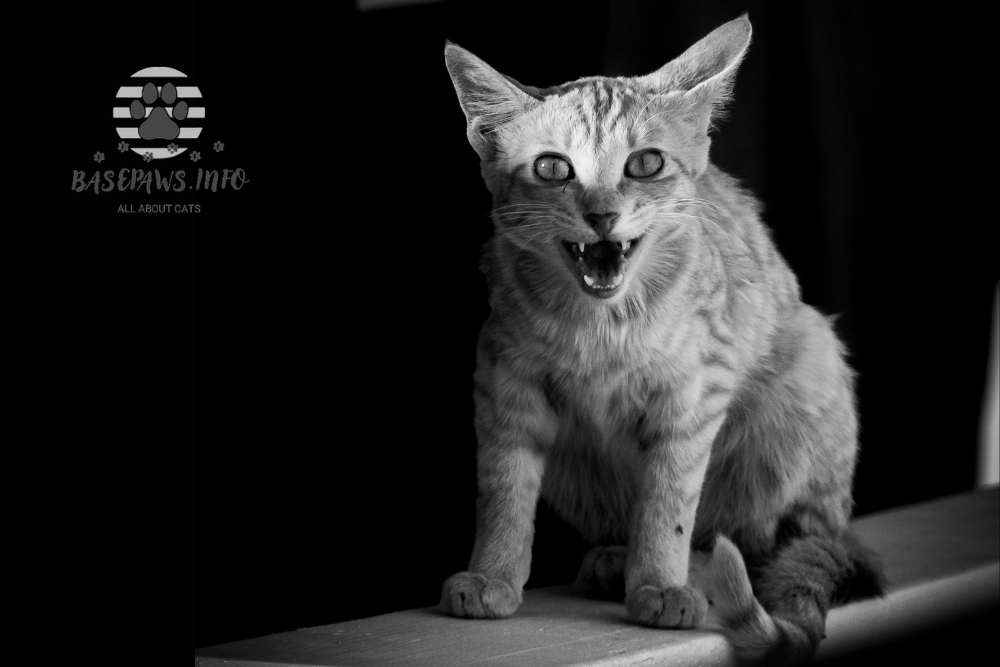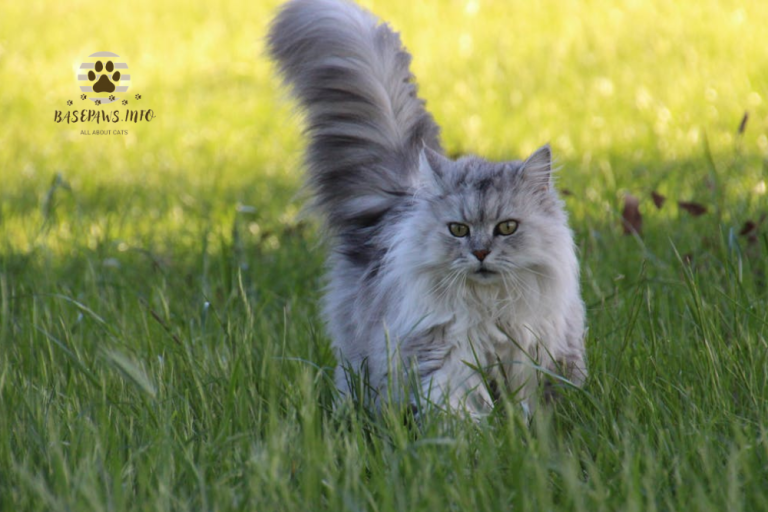Understanding Cat Aggression: Causes and Solutions
Are you facing challenges with your cat’s aggressive behavior? This common issue can lead to stress and worry for pet owners who love their feline companions but feel unsure how to handle them. Aggressive behavior in cats can manifest in various ways, including biting, scratching, or hissing. Understanding why your cat acts this way is the first step toward a peaceful relationship.
The good news is that you can effectively manage your cat’s aggression by identifying the underlying causes and implementing positive strategies. Whether your cat is acting out due to fear, playfulness, or territorial instincts, addressing these behaviors is possible. This article will guide you through understanding cat aggression and provide you with practical solutions to foster a more harmonious environment.
By recognizing your cat’s needs and responding appropriately, you can help reduce aggressive behaviors and create a happier home for both of you. Let’s explore the complexities of cat aggression together and discover how to improve your relationship with your furry friend.
Overview of Cat Aggression
Importance of Understanding Cat Behavior
Understanding cat behavior is essential for a harmonious relationship between you and your pet. Cats communicate their feelings through body language and vocalizations, and knowing what these signs mean can help you prevent aggressive situations. Awareness of your cat’s natural instincts and stressors allows you to create a supportive environment. This understanding can foster a deeper bond between you and your feline companion.
Key Takeaways
- Recognizing signs of aggression early can prevent escalation.
- Understanding the motivations behind aggression is crucial.
- A safe and enriching environment contributes to a well-adjusted cat.
Understanding Aggression in Cats
What Is Aggression?
Aggression in cats is a complex behavioral response that can arise from various motivations and environmental factors. It is important to recognize that aggression is a natural behavior, often serving as a means of communication, defense, or establishing dominance. While it may seem alarming to pet owners, understanding aggression is crucial for effectively managing and reducing it.
Definition and Overview
Aggression can be defined as any behavior intended to cause harm or the potential for harm to another being. In cats, this can range from playful swatting and hissing to serious biting and attacking. Understanding the context and triggers for these behaviors is essential for addressing them appropriately.
Types of Aggressive Behaviors
- Physical Aggression: This includes biting, scratching, and swatting. Physical aggression can result from various motivations, including fear, territoriality, or playfulness.
- Vocal Aggression: Cats may use vocalizations like hissing, growling, or yowling to express their displeasure or warning to other animals or humans. This vocal aggression is often a precursor to physical aggression.
- Body Language: Aggressive body language can include puffed-up fur, erect ears, an arched back, and a tense posture. Recognizing these signs can help you intervene before aggression escalates.
Natural Instincts and Behaviors
Cats are instinctual hunters, and their aggressive behaviors are often rooted in their predatory nature. Understanding these natural instincts can help pet owners differentiate between play and aggression.
- Hunting Instincts: Cats engage in hunting behaviors, such as stalking and pouncing, even when playing. Young cats, in particular, may display playful aggression as they practice their hunting skills. This behavior is often misinterpreted as aggression when, in fact, it is a form of play.
- Social Structure: In multi-cat households, social hierarchies can lead to aggressive behaviors as cats compete for resources or establish dominance. This competition may result in aggressive displays such as chasing, swatting, or even fighting.
Common Motivations for Aggression
Understanding the motivations behind a cat’s aggression is essential for addressing the issue effectively. Here are some common reasons for aggressive behavior in cats:
- Fear: A frightened cat may react aggressively to protect itself. When a cat feels cornered or threatened by an unfamiliar person, animal, or object, it may resort to aggression as a defense mechanism. Fear-based aggression is often accompanied by signs of stress, such as hiding or vocalizations.
- Play and Excitement: Young cats and kittens often display playful aggression, where they bite, scratch, and wrestle during playtime. This behavior is typically harmless, but it can become problematic if it escalates to painful interactions with humans or other pets. Providing appropriate toys and outlets for this energy can help mitigate aggressive play.
- Pain and Sensitivity: Cats in pain may become irritable and react aggressively if touched or handled. Medical conditions, injuries, or even dental issues can contribute to aggressive behavior. If your cat suddenly exhibits aggressive tendencies, it’s crucial to consult a veterinarian to rule out underlying health problems.
- Dislike of Petting: Some cats have a lower tolerance for petting and may react aggressively if they feel overstimulated. Understanding your cat’s preferences for affection and respecting its boundaries can help prevent aggressive reactions.
- Protecting Territory: Cats are territorial animals. If another animal encroaches on their space, they may react aggressively to defend their territory. This is particularly common in multi-pet households or when new pets are introduced. Providing separate spaces and resources can help reduce territorial disputes.
- Redirected Aggression: This occurs when a cat cannot reach the source of its frustration (e.g., a bird outside the window) and redirects its aggression toward a nearby person or animal. Understanding this dynamic is vital for managing aggression, as it can often result in unexpected outbursts.
- Maternal Aggression: Mother cats may exhibit aggression to protect their kittens from perceived threats. This instinctual behavior is natural, and understanding it can help owners manage interactions between the mother and her kittens safely.
- Inter-Cat Aggression: In households with multiple cats, competition for resources such as food, litter boxes, and resting areas can lead to aggressive behavior. Understanding each cat’s personality and providing ample resources can help reduce these conflicts.
- Status-Induced Aggression: In multi-cat households, one cat may assert dominance over others, leading to aggressive behaviors. Monitoring interactions and providing safe spaces for less dominant cats can help reduce stress and aggression.
- Predatory Aggression: Cats may display predatory behaviors towards small animals or moving objects, such as toys or even fingers. While this behavior is natural, it is essential to channel it appropriately through interactive play and suitable toys.
Understanding aggression in cats is a vital step toward managing it effectively. By recognizing the underlying motivations and contexts of aggressive behavior, you can create a safer environment for both your cat and yourself. In the following sections, we will explore the signs of aggression, common causes, and practical strategies for managing and reducing aggressive behaviors in your feline friend.
Signs of Aggression in Cats
Recognizing the signs of aggression in cats is crucial for ensuring a safe environment for both your pet and those around it. Cats communicate primarily through body language, vocalizations, and physical cues. Being aware of these indicators allows pet owners to intervene before an aggressive situation escalates.
Recognizing Warning Signs
When a cat is displaying aggression, there are several warning signs to look for. Understanding these signs can help you react appropriately and prevent potential harm.
Changes in Body Language
- Puffed-up Fur: When a cat’s fur stands on end, it indicates that the cat is frightened or agitated. This reaction, known as “piloerection,” makes the cat appear larger to potential threats.
- Ears and Tail Position: A cat that is agitated may have its ears flattened against its head and its tail held low or puffed up. This body language indicates fear or a desire to defend itself.
- Posture: An aggressive cat may adopt a defensive or offensive stance. A tense, hunched body posture or an arched back signifies that the cat is ready to fight or defend itself.
- Eyes: Dilated pupils and a fixed gaze can indicate aggression. Cats may also stare intensely at the perceived threat, a common precursor to aggressive behavior.
- Mouth: Hissing, growling, or baring teeth are vocalizations that often accompany aggressive body language. These sounds serve as warnings to potential threats, signaling the cat’s discomfort or desire to defend its territory.
Vocalizations
Cats use various vocalizations to communicate their feelings. Some vocal sounds to watch for include:
- Hissing: This is a common sign of fear or annoyance. When a cat hisses, it is a clear warning to back off.
- Growling: A growl and trilling indicate that a cat feels threatened and may resort to aggression if the perceived threat does not retreat.
- Yowling: This is often a distress signal. If a cat yowls while in a confrontation, it might indicate that it feels cornered and is ready to defend itself.
Physical Signs
Physical signs can manifest during aggressive interactions, whether they involve another animal or a human. Some common physical signs include:
- Swatting or Scratching: An aggressive cat may swat at or scratch its target. This behavior often indicates that the cat feels threatened and is attempting to assert its dominance or defend itself.
- Biting: Biting can occur during aggressive encounters, especially if the cat feels cornered. The severity of the bite can range from a warning nip to a serious attack.
- Chasing: If a cat is chasing another animal or person, this behavior may indicate aggression. It’s important to intervene if a cat seems intent on catching its target, as this can escalate into a physical altercation.
Fear Indicators
Cats may display aggression when they are frightened. Signs of fear include:
- Retreating: A frightened cat may try to escape by hiding or running away. If a cat feels cornered, it may lash out instead of fleeing.
- Crouching: A fearful cat may crouch low to the ground, trying to make itself less noticeable. This posture can be accompanied by wide eyes and flattened ears.
- Vocalization: A fearful cat may vocalize more than usual, often letting out cries or howls to signal distress.
Aggressive Actions
When aggressive actions occur, it’s essential to take them seriously. Here are some aggressive behaviors to watch for:
- Lunging: A cat that lunges at another animal or person is displaying clear aggression. This action often follows growling or hissing as a precursor.
- Attacking: An outright attack may occur if a cat feels threatened or provoked. This behavior can lead to severe injury, making it essential to manage aggressive situations promptly.
- Persistent Aggression: Some cats may display consistent aggressive behaviors toward certain triggers or during specific situations. Understanding the patterns of aggression is vital for effective management.
Types of Aggression in Cats
Understanding the various types of aggression in cats is crucial for addressing the problem effectively. Here are some common types:
- Play Aggression: Often seen in kittens and young cats, where biting and scratching occur during play.
- Fear Aggression: Triggered by perceived threats, causing a cat to lash out defensively.
- Petting-Induced Aggression: Some cats become overstimulated during petting and react aggressively.
- Pain-Induced Aggression: Aggressive behavior may occur if a cat is in pain. Always consult a veterinarian in such cases.
- Territorial Aggression: Cats may show aggression when another animal invades their territory.
- Redirected Aggression: When a cat cannot reach the source of its aggression (like a bird outside), it may redirect that aggression toward a nearby person or animal.
- Maternal Aggression: Mother cats may become aggressive to protect their kittens.
- Inter-Cat Aggression: This occurs when multiple cats in the same household compete for territory or resources.
- Status-Induced Aggression: In multi-cat households, one cat may assert dominance over others, leading to aggressive behaviors.
- Predatory Aggression: Cats may display predatory behaviors towards small animals or moving objects.
Common Causes for Aggression in Cats
Several factors can contribute to aggressive behavior in cats. Understanding these causes can help you address the underlying issues effectively:
- Pain and Medical Issues: Health problems can lead to irritability and aggression. Always consult a vet to rule out medical issues.
- Environmental Changes: New pets, moving to a new home, or changes in routine can upset a cat’s sense of security.
- Stressful Situations: Loud noises, unfamiliar visitors, or other stressful stimuli can trigger aggressive responses.
- Hormonal Influences: Intact males are more prone to aggression due to hormonal influences. Neutering can help reduce these tendencies.
- Nighttime Aggression: Some cats become more active at night, leading to increased playful aggression or mischief.
Managing Aggression
Managing aggression in cats is crucial for maintaining a harmonious home environment and ensuring the safety of both the cat and its human companions. Understanding the underlying causes of aggression can help pet owners develop effective strategies for addressing and reducing these behaviors. Below are various techniques and approaches to managing aggression in cats.
Identifying Triggers
The first step in managing aggression is identifying the triggers that lead to aggressive behavior. Common triggers may include:
- Changes in Environment: Moving to a new home, introducing new pets, or even rearranging furniture can unsettle a cat and lead to aggression. Identifying specific environmental changes can help you predict and prevent aggressive incidents.
- Stressful Situations: Situations such as loud noises (thunder, fireworks), large gatherings, or visits from unfamiliar people or pets can trigger aggression. Pay attention to your cat’s behavior during these times to identify patterns.
- Health Issues: Pain or discomfort due to underlying health problems can lead to increased irritability and aggression. Regular veterinary check-ups are vital for maintaining your cat’s health and addressing any medical concerns that may contribute to aggressive behavior.
Tips for Reducing Cat Aggression
Several proactive strategies can help reduce aggression in cats. Implementing these techniques can lead to a more peaceful coexistence:
- Provide a Safe Environment: Create a safe and secure space for your cat, equipped with hiding spots, vertical spaces (like cat trees), and comfortable resting areas. A cat that feels secure in its environment is less likely to exhibit aggression.
- Establish Routine: Cats thrive on routine. Keeping a consistent schedule for feeding, playtime, and litter box cleaning can help reduce anxiety and aggression by providing predictability.
- Positive Reinforcement: Reward your cat for calm and appropriate behavior with treats, praise, or playtime. Positive reinforcement can encourage your cat to repeat desirable behaviors and reduce aggressive tendencies.
- Interactive Play: Regular interactive play sessions can help alleviate boredom and redirect a cat’s energy. Use toys that mimic prey behavior, like feather wands or laser pointers, to engage your cat in physical activity. A well-exercised cat is less likely to engage in aggressive play or behavioral issues.
- Feliway Products: Consider using pheromone diffusers, such as Feliway, which can help calm anxious cats. These products mimic the natural pheromones that cats release when they feel secure, creating a calming effect in their environment.
Behavior Modification Techniques
In addition to environmental adjustments, behavior modification techniques can be beneficial:
- Desensitization: Gradually expose your cat to the situations that trigger aggressive responses. Start with low-intensity encounters and increase exposure as your cat becomes more comfortable. Pair the exposure with positive reinforcement to create a positive association.
- Counter-Conditioning: Teach your cat to associate previously feared or aggressive-inducing stimuli with positive experiences. For example, if your cat becomes aggressive toward other pets, reward it with treats or praise when it remains calm in their presence.
Understanding What Not to Do
Managing aggression also involves knowing what actions can exacerbate the situation. Here are some key points to remember:
- Avoid Physical Punishment: Hitting or yelling at your cat can increase fear and anxiety, leading to more aggressive behavior. Instead, focus on calm and positive interventions.
- Misguided Praise or Comfort: Comforting an aggressive cat during an outburst can inadvertently reinforce the aggressive behavior. Instead, wait until your cat calms down before offering affection or treats.
When to Seek Professional Help
If your cat’s aggression escalates or becomes unmanageable, it may be time to seek professional assistance:
- Recognizing Serious Cases: If your cat displays severe aggression that results in injury to itself or others, or if the aggression is frequent and unpredictable, it’s essential to consult a veterinarian or a certified animal behaviorist.
- Importance of Veterinary Guidance: A veterinarian can rule out any underlying health issues contributing to aggressive behavior. They may also recommend a referral to a qualified behaviorist for more specialized training and support.
- Treatment Plans for Aggressive Cats: Treatment plans may include behavioral modification techniques, environmental management, and, in some cases, medication to help manage aggression.
Impact of Neutering on Aggression
Neutering can significantly affect a cat’s aggression levels, particularly in males. Here’s how:
- Reducing Hormonal Aggression: Neutering helps decrease hormone-driven aggressive behaviors, such as territorial disputes and mating-related aggression. Many owners report a decrease in aggressive behaviors following the procedure.
- Long-Term Effects: While neutering can reduce aggression, it may not eliminate it entirely. It’s essential to continue implementing positive behavior management strategies even after the procedure.
Protecting Yourself and Your Cat
This table summarizes essential information and actionable steps for dealing with cat aggression and bites effectively.
| Section | Details |
| Protecting Yourself and Your Cat | Essential guidelines to ensure the safety and well-being of both you and your cat. |
| What to Do if Your Cat Bites or Scratches You | 1. Stay Calm: – Do not react aggressively. Reacting with anger can escalate the situation and frighten your cat further. 2. Clean Wounds Immediately: – Wash the wound with soap and water. – Use an antiseptic solution to clean the area thoroughly. 3. Seek Medical Attention if Necessary: – If the injury is severe, or if you notice signs of infection, consult a healthcare professional. |
| Are Cat Bites Dangerous? | Yes, cat bites can be dangerous. – Cat bites may lead to infections due to bacteria in a cat’s mouth. – It’s essential to monitor the wound for signs of infection, such as: – Redness – Swelling – Pus – Increased pain |
| Can Aggression Be Prevented After a Bite? | While prevention is ideal, it’s crucial to address the underlying causes of aggression: – Implementing behavioral therapy – Making environmental modifications – These strategies can help reduce the likelihood of future incidents. |
| Rehoming Concerns and Considerations | If aggression persists and cannot be managed effectively: – Rehoming may be a last resort; however, it’s essential to explore all options first. – Consulting a professional can provide additional strategies or support before making this decision. |
Key Points to Remember
- Stay Calm during aggressive incidents to prevent escalation.
- Immediate Care is crucial for any bites or scratches.
- Monitor for Signs of Infection to prevent serious health issues.
- Consult Professionals for behavior modification and rehoming considerations.
Benefits of Cat Enrichment
Importance of Enrichment
Enrichment is vital for your cat’s physical and mental well-being. Providing stimulating activities can prevent boredom and reduce aggression.
Ideas for Enriching Your Cat’s Life
- Interactive Toys: Invest in toys that engage your cat mentally and physically.
- Scratching Posts: Provide scratching options to satisfy natural behaviors.
- Vertical Spaces: Cats love to climb. Cat trees and shelves can provide much-needed vertical space.
Conclusion
Managing cat aggression is crucial for a peaceful home. By understanding the underlying causes of aggression and implementing appropriate strategies, you can help your feline friend thrive. Remember that seeking professional guidance is essential if aggressive behavior persists. Don’t hesitate to reach out for help when needed.
Frequently Asked Questions
Sudden Aggression Causes
Q: Why did my cat suddenly become aggressive?
A: Sudden aggression can be caused by pain, environmental changes, or fear. Always consult a veterinarian if you notice sudden changes in behavior.
Aggression Towards Other Cats
Q: Why is my cat aggressive towards other cats?
A: Territorial behavior or competition for resources can lead to aggression between cats. Providing separate spaces can help reduce conflicts.
Veterinary Approaches for Aggressive Cats
Q: How can a veterinarian help with my cat’s aggression?
A: A veterinarian can assess health issues, suggest behavior modification techniques, and discuss potential medication to manage aggression.
Medication for Aggressive Cats
Q: Is medication an option for managing aggression in cats?
A: Yes, in some cases, medication can help manage aggression, especially if behavioral modifications alone are not effective. Always consult your veterinarian for guidance.







